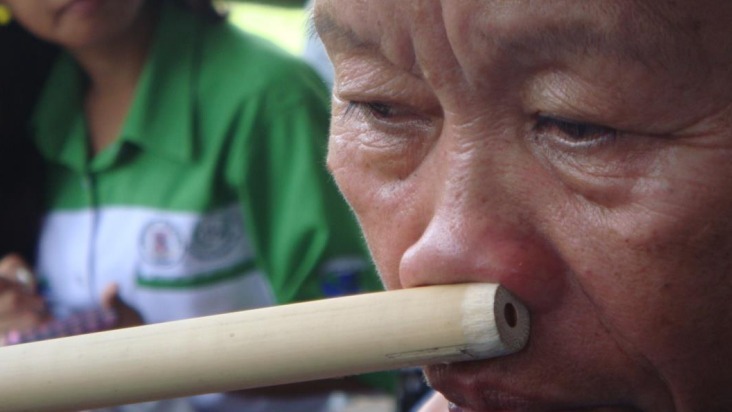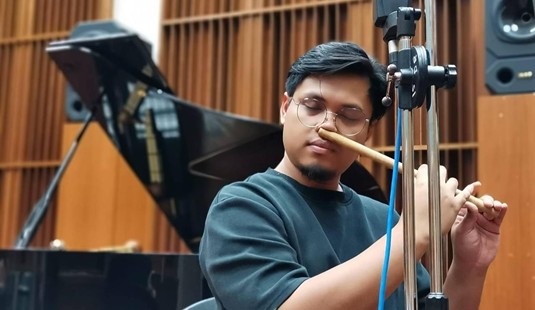ARTS AND CULTURE INFORMATION GATEWAY
Immerse yourself in the colorful world of art and culture! From traditional heritage to contemporary works, discover uniqueness that reflects the nation's identity and identity
ALAT MUZIK TURALI
Picture
2
Video
No record
Today's Visitor
47
Number of Visitors
1106
Introduction and history
Turali, also known as Turahi in the Tambunan subdialect and Tuahi in the Penampang dialect, is a traditional musical instrument in the flute-type aerophone category. It is a nose flute that is uniquely played by blowing through the nose, making it different from most other wind instruments.
Turali is made of Sumbiling bamboo and measures about 30 - 40 centimeters long. The end is punched with a hole for blowing, known as a Pogunian hole. The stem will have four holes to produce various tones. The back holes are known as Pongirusan holes, which are operated by the thumb, while the three holes in the front are known as Mokorudu holes, which are operated by the other fingers.
Traditionally, Turali is played by the Kadazan-Dusun community in a state of mourning, especially when facing a calamity such as death, as an accompaniment to feelings of sadness and respect. The rhythm of the music often imitates the melody of various songs and ritual readings. It is also associated with a sense of longing. It is usually played as an expression of the self who is grieving when remembering a family member who has passed away. According to this ethnic taboo, Turali cannot be played when there is a death until during the mourning period. It can only be played over 6 months or on the anniversary of a death. However, along with the development of today's contemporary world, it is no longer limited to mourning ceremonies only because it is often performed in public events such as celebrating traditional festivals or welcoming the arrival of important guests.
-
-
-
-
Reference Source
Pugh-Kitingan, J. (2017). Sources, sounds and meanings of Turali (Noseflute) music in Dusunic cultures of Sabah. Malaysian Journal of Music, 6(2), 1–28. https://doi.org/10.37134/mjm.vol6.2.1.2017
Pugh-Kitingan, J. (2012). Kadazan Dusun. Institut Terjemahan & Buku Malaysia.
Borneo Ensemble. (2024). Universiti Malaysia Sabah
Location
State JKKN Contact Information
Puan Nurshahrinna Syahrial
Cultural Officer
Jabatan Kebudayaan dan Kesenian Negara, Sabah
Kompleks JKKN Sabah,
Jalan Tasik off KM4 Jalan Penampang,
88200 Kota Kinabalu
SABAH
088-205070
Use the form below to contact the Informant/Figure/Editor/Researcher directly. We will respond to your inquiry as soon as possible!







